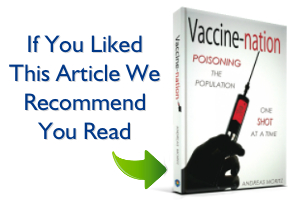By: Rosemary Mathis
Source: NaturalNews.com
According to the World Health Organization, immunization providers are responsible for 1.3 million early deaths each year in emerging countries, due to using needles and syringes multiple times without sterilizing them. But, it doesn’t stop there. Approximately 21.7 million people every year who line up for vaccines and other injections with these unsterilized needles and syringes are being infected with Hepatitis B. An additional 2 million are infected with Hepatitis C, and still another 250,000 receive HIV infections. One might question why the World Health Organization would allow the administration of vaccines and medications year after year, in such an unsanitary manner, while keeping statistics that prove millions are actually receiving a death sentence.
Is this a new problem? No!
In 1999, the World Health Organization (WHO), United Nations Children’s Fund (UNICEF) and the United Nations Population Fund (UNFPA) issued a joint statement outlining the substantial risk of disease and death involved when re-using immunization needles. This joint statement also provided a solution to the problem – an auto-disable syringe, which was “widely available at low cost.” This type of syringe presented the lowest risk of person-to-person transmission of blood-borne pathogens because it could not be reused. Their stated goal was:
“By 2003 WHO, UNICEF and UNFPA recommend that all immunization be provided in all countries using only auto-disable syringes.”
Problem solved, right? Again, No! The original 1999 joint statement was revised in 2003. The following statistics were reported by UNICEF in an undated publication:
Estimated number of annual infections due to unsafe injections:
• Hepatitis B: 21 million cases
• Hepatitis C: 2 million cases
• HIV: 250,000
• Estimated annual deaths: 1.3 million
Another three years pass. In 2006, WHO issues a revised statement titled, Injection Safety: Misuse and Overuse of Injection Worldwide. This ‘revised’ statement says:
The most recent study indicates that each year unsafe injections cause an estimated 1.3 million early deaths, a loss of 26 million years of life, and an annual burden of USD 535 million in direct medical costs.
Unsafe injection practices are a powerful engine to transmit blood-borne pathogens, including hepatitis B virus (HBV), hepatitis C virus (HCV) and human immunodeficiency virus (HIV). Because infection with these viruses initially presents no symptoms, it is a silent epidemic. However, the consequences of this are increasingly recognized.
• Hepatitis B virus: HBV is highly infectious and causes the highest number of infections: in developing and transitional countries 21.7 million people become infected each year, representing 33% of new HBV infections worldwide
• Hepatitis C virus: Unsafe injections are the most common cause of HCV infection in developing and transitional countries, causing two million new infections each year and accounting for 42% of cases.
• Human immunodeficiency virus: Globally nearly 2% of all new HIV infections are caused by unsafe injections. In South Asia up to 9% of new cases may be caused in this way. Such proportions can no longer be ignored.
HBV, HCV, and HIV cause chronic infections that lead to disease, disability and death a number of years after the unsafe injection. Those infected with hepatitis B virus in childhood will typically present with chronic liver disease by the age of 30 years, at the prime of their life. This has a dramatic effect on national economies.
* The cost of unsafe injections by M.A. Miller & E. Pisani: Bulletin of the World Health Organization, Vol. 77, no 10, 808-811.
Please note the above quotation refers to ‘the most recent study.’ This is the same 1999 study which brought unsafe immunization practices to the attention of worldwide health authorities. Did none of these organizations see a need to follow-up on the issue and perhaps update their records? Apparently an estimated 1.3 million early deaths per year is nothing to be overly concerned about when it comes to immunization practices.
An additional five years pass. In 2011, Talea Miller, PBS, issues a report stating:
“A nurse injects a patient with a syringe of antibiotics, reloads and moves on to the next patient in line. The syringe isn’t sterilized, the needle is not replaced, and the patient is at risk of contracting a disease from the very shot that is supposed to cure him.
It’s a disturbing scenario, and one that plays out each day in many poor countries. About 40 percent of all injections are given with unsterilized, reused syringes and needles, reports the World Health Organization. An estimated 1.3 million deaths — and 21.7 million new Hepatitis B infections — occur each year as a result of the unsafe practice.”
Twelve years since the initial warning about unsafe immunization practices being used worldwide and the statistics don’t appear to be changing. Are the estimated 16.9 million early deaths and 288 million new infections with potentially life threatening diseases which occurred during that time supposed to be acceptable collateral damage?
If so, perhaps the average medical consumer has no concept of what the terms ‘infectious disease control’ and ‘public health’ mean to those in charge of the world’s health and safety
To view the original article click here.
To reprint this article, visit the source website for reprinting guidelines

